Welcome to the Superior Fireplace manual, your guide to safe and efficient installation, operation, and maintenance. These fireplaces offer quality, reliability, and cozy warmth for your home.
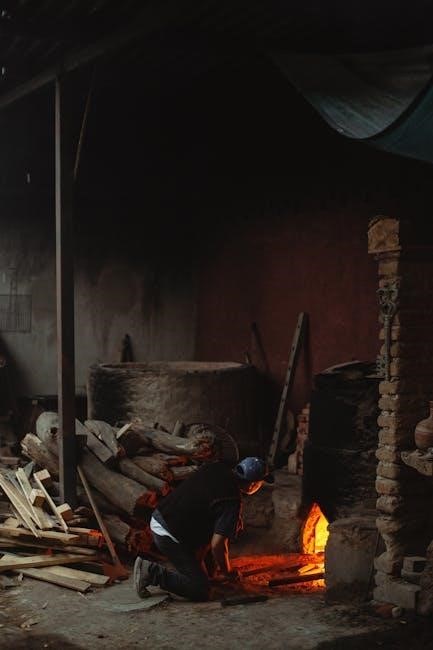
1.1 Brief History of Superior Fireplaces
Superior Fireplaces, a leading manufacturer in the industry, has a rich history of delivering innovative and reliable heating solutions. Since its inception, the company has focused on combining aesthetics with functionality, offering high-quality fireplaces designed for residential use. Over the years, Superior Fireplaces has evolved from traditional models to modern, energy-efficient units, catering to diverse homeowner needs. Known for their durability and sleek designs, these fireplaces have become a popular choice for those seeking both comfort and style. The company’s commitment to safety and efficiency is evident in their direct-vent and vent-free models, ensuring a wide range of options for various installations. With a strong emphasis on customer satisfaction, Superior Fireplaces continues to innovate, providing users with comprehensive manuals and guides for optimal performance and maintenance.
1.2 Key Features and Benefits
Superior Fireplaces are renowned for their exceptional quality, safety, and efficiency. They offer both direct-vent and vent-free models, providing flexibility for various installation needs. These fireplaces are designed with energy efficiency in mind, ensuring minimal energy consumption while delivering consistent heat. Key features include advanced ignition systems, sealed combustion chambers, and robust construction for durability. They also come with customizable designs to match different home aesthetics. Additional benefits include remote control operation for convenience and heat distribution fans to maximize warmth. Superior Fireplaces are built to last, requiring less maintenance compared to traditional fireplaces. Their commitment to safety and performance makes them a top choice for homeowners seeking reliable and stylish heating solutions. With comprehensive manuals and guides, users can easily operate and maintain their fireplaces for optimal functionality and longevity.
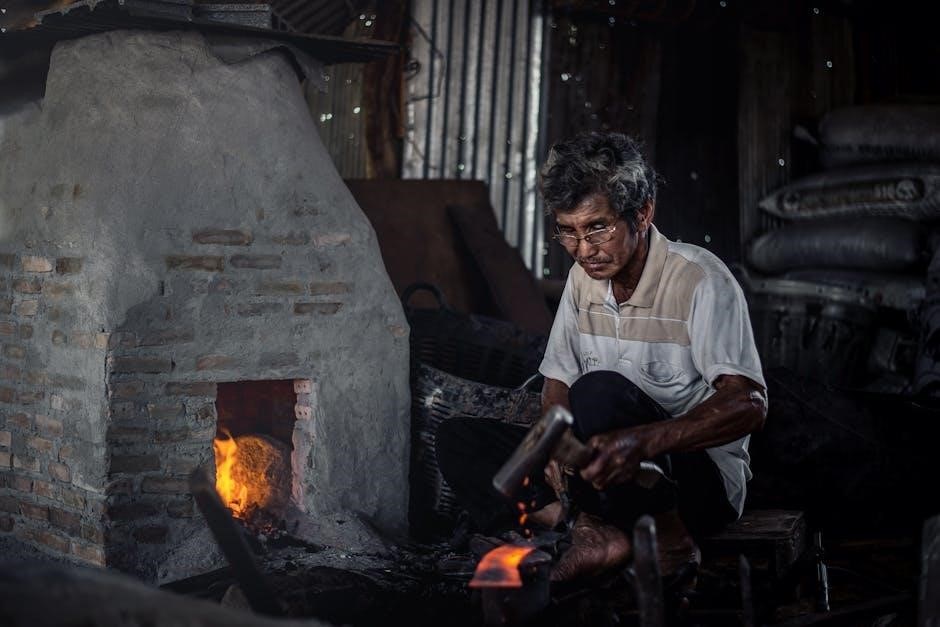
Installation of Superior Fireplaces
Installation requires careful planning, adhering to manual guidelines, and proper venting to ensure safety and efficiency. Direct-vent models are popular for their sealed combustion system.
2.1 Pre-Installation Preparation
Before installing your Superior Fireplace, ensure the location meets local building codes and manufacturer requirements. Select a model suitable for your space, considering venting needs and fuel type. Prepare the area by clearing flammable materials and ensuring proper ventilation. Check for any obstructions in the chimney or venting system. Gather necessary tools and materials, as outlined in the manual. Verify the fireplace model matches your home’s specifications. Ensure all safety precautions, such as proper flooring and surrounding materials, are in place. Review the installation manual thoroughly to understand the process and any specific recommendations for your model. Proper preparation ensures a safe and efficient installation process.
- Clear the area of flammable materials.
- Verify venting system compatibility.
- Ensure compliance with local codes.
2.2 Safety Precautions During Installation
Ensure all safety precautions are followed during the installation of your Superior Fireplace to avoid hazards. Always turn off utilities, such as gas and electricity, before starting work. Wear protective gear, including gloves and safety glasses. Ensure the area is well-ventilated and free from flammable materials. Never attempt installation without proper tools or knowledge, as this can lead to unsafe conditions. If unsure, consult a qualified technician. Follow the manufacturer’s instructions precisely, especially for venting and electrical connections. Keep children and pets away from the installation site. Proper grounding and bonding of components are critical to prevent electrical hazards. Failure to adhere to safety guidelines may result in fire risks or system malfunctions. Always prioritize safety to ensure a secure and efficient installation process.
- Turn off utilities before starting work.
- Wear protective gear, such as gloves and safety glasses.
- Ensure proper ventilation and keep flammable materials away.
- Consult a qualified technician if unsure.
- Follow manufacturer instructions for venting and electrical connections.
- Keep children and pets away from the installation site.
- Ensure proper grounding and bonding of components.
2.3 Venting Requirements and Recommendations
Proper venting is essential for the safe and efficient operation of your Superior Fireplace. Ensure the venting system is correctly sized and installed according to the manufacturer’s specifications. Use only approved, corrosion-resistant materials to prevent leaks and ensure durability. The venting system should be designed to handle the specific type of fireplace you own, whether it’s direct-vent or vent-free. For direct-vent models, ensure the vent terminates outside, away from windows, doors, and other openings to prevent gas re-entry. Regularly inspect the venting system for blockages, such as debris or nesting animals, and clean it as needed. Always follow local building codes and regulations for venting installations. Proper venting not only enhances performance but also ensures a safe living environment. Refer to the manual for detailed venting requirements specific to your fireplace model.
- Use approved, corrosion-resistant materials for venting.
- Ensure proper sizing and installation per manufacturer guidelines.
- Inspect and clean the venting system regularly.
- Comply with local building codes and regulations.
- Ensure vent termination is away from windows and doors.
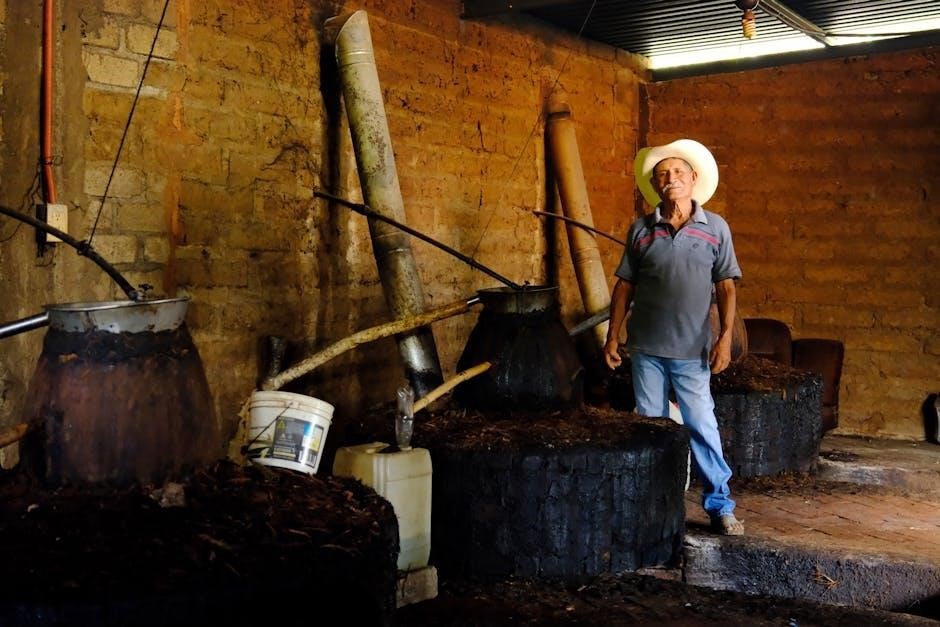
Operating Your Superior Fireplace
Operating your Superior Fireplace is straightforward with the right guidelines. Start by following the ignition procedure, adjust flame height for desired warmth, and use optional remote controls for convenience.
3.1 Starting the Fire: Step-by-Step Guide
To start the fire in your Superior Fireplace, ensure the area is clear of flammable materials. Open the damper and ensure proper ventilation. Turn the gas supply knob to the “pilot” position and press the ignition button until the pilot light ignites. Once the pilot is lit, slowly turn the knob to the “on” position to release gas to the burner. Use the remote control or adjustment knob to achieve the desired flame height and heat output. Always follow the manual’s specific instructions for your model, and ensure all safety precautions are in place before and during operation. Proper ignition ensures efficient and safe performance of your Superior Fireplace.
3.2 Adjusting Flame Height and Heat Output
Adjusting the flame height and heat output on your Superior Fireplace is straightforward. Use the remote control or the manual control knob to regulate the flame size. For gas models, turning the knob gently will increase or decrease the flame height. Ensure the flame remains blue, indicating proper combustion. To adjust heat output, use the variable heat control feature, which allows you to customize warmth levels. Some models include a heat distribution fan to circulate warm air more efficiently. Always refer to your specific fireplace manual for detailed instructions, as controls may vary by model. Proper adjustment ensures optimal performance, safety, and energy efficiency. Remember to monitor the flame and heat output during operation to maintain a comfortable and safe environment.
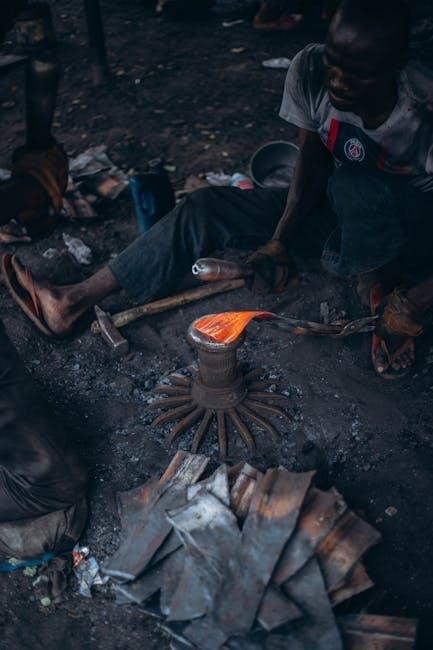
Maintenance and Upkeep
Regular maintenance ensures your Superior Fireplace operates safely and efficiently. Clean the unit, inspect vents, and replace worn parts as needed. Schedule annual professional inspections.
4.1 Cleaning the Fireplace and Surroundings
Cleaning your Superior Fireplace involves several key steps to maintain its efficiency and appearance. Start by allowing ashes to cool completely before removal, using heat-resistant tools and a metal bucket. Dampen ashes to prevent dust, then sweep or vacuum the firebox thoroughly. For glass doors, use a glass cleaner and a soft cloth to avoid streaks. Regularly wipe surrounding areas, including mantles and hearths, with a damp cloth to remove soot and dust. Avoid harsh chemicals, as they may damage finishes. Inspect and clean vents to ensure proper airflow. For more detailed cleaning, such as removing stubborn stains or deep cleaning, refer to the manual for specific instructions. Schedule cleaning after each use and perform a deeper clean at least once a week during heavy usage to maintain your fireplace’s performance and safety.
4.2 Annual Inspection Checklist
To ensure optimal performance and safety, conduct an annual inspection of your Superior Fireplace. Begin with the venting system, checking for blockages, damage, or corrosion. Inspect the chimney for obstructions, such as nests or debris. Examine the burner and ignition system for proper function and cleanliness. Look for wear on gaskets, seals, and glass components, replacing them if necessary. Check the firebox for cracks or damage. Ensure all connections are secure and free from leaks. Test the remote control or wall switch for smooth operation. Finally, inspect the glowing embers and logs for damage, replacing them if needed. Schedule this inspection with a qualified technician to maintain safety and efficiency. Regular checks help prevent issues and ensure your fireplace operates at its best.
4.3 Replacing Parts: Glow Embers and Logs
Replacing glow embers and logs in your Superior Fireplace is essential for maintaining a realistic flame appearance and efficient operation. Begin by turning off the fireplace and allowing it to cool completely. Access the firebox by removing the glass front or panels, as instructed in your manual. Gently pull out the old embers and logs, taking care not to damage surrounding components. Install the new set by aligning them according to the manufacturer’s guidelines. Ensure proper placement to achieve the desired flame effect. Once done, reassemble the fireplace and test it by lighting a small flame to confirm everything works correctly. Always use genuine Superior replacement parts for optimal performance and safety. Refer to your manual for specific instructions or consult a qualified technician if unsure.
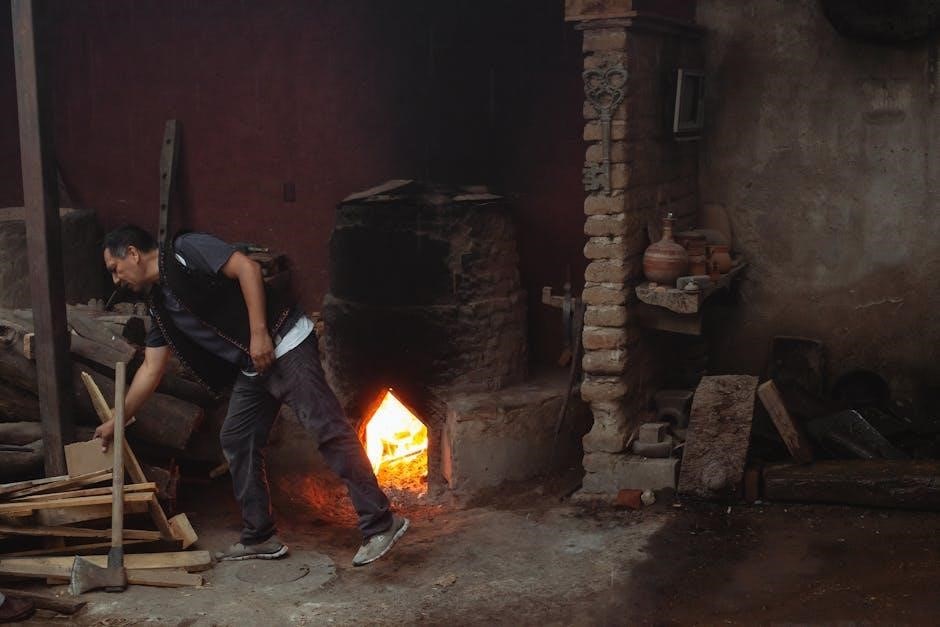
Safety Guidelines
Always turn off the fireplace before maintenance. Keep flammable materials away and ensure proper ventilation; Follow manual instructions and perform annual inspections for safe operation.
5.1 Pre-Use Safety Checks
Before using your Superior Fireplace, ensure all components are in good condition. Check for blockages in vents and chimneys. Inspect burners for damage or debris. Verify proper gas connections and ensure no leaks are present. Look for any signs of wear or damage to logs, embers, or ignition systems. Test the ignition to ensure it lights properly. If any issues are found, do not operate and contact a qualified technician. Regular pre-use checks help prevent accidents and ensure efficient performance. Always refer to the manual for specific guidelines tailored to your model.
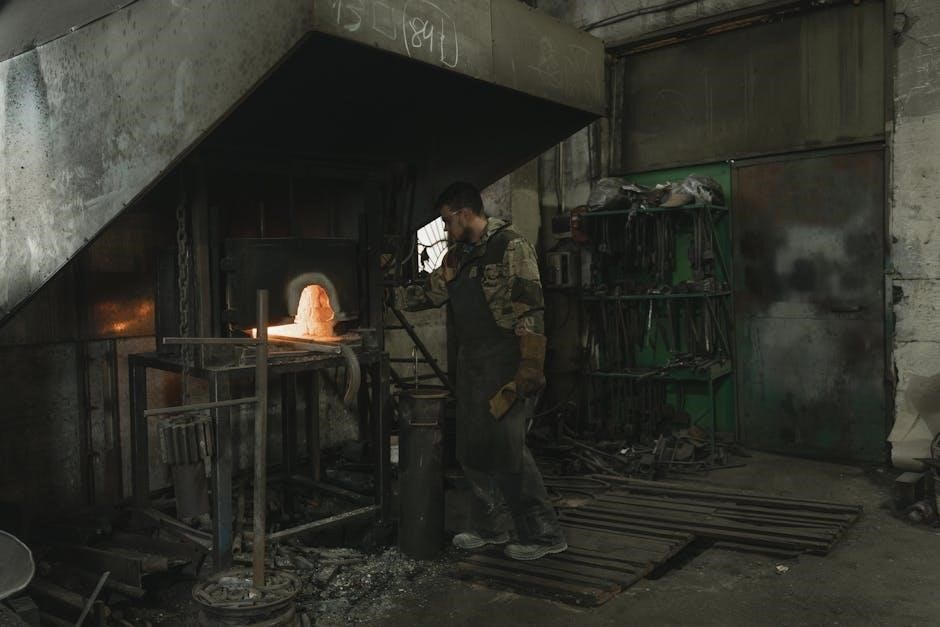
5.2 Safety During Operation
During operation, always maintain a safe environment around your Superior Fireplace. Keep children and pets at a safe distance. Never leave the fireplace unattended while in use. Ensure the area is well-ventilated to avoid gas buildup. Avoid placing flammable materials near the fireplace. Monitor the flame height and adjust as needed to prevent overheating. Never overload the fireplace with excessive fuel, as this can cause unsafe conditions. Use only approved fuels or logs as specified in the manual. Keep a fire extinguisher or smoke detector nearby. If you notice unusual odors, sounds, or flame behavior, turn off the fireplace immediately and contact a technician. Always follow the manufacturer’s guidelines for safe operation to ensure a secure and enjoyable experience.
5.3 Emergency Shutdown Procedures
In case of an emergency, such as a gas leak, unusual odors, or loss of flame control, shut down your Superior Fireplace immediately. Turn off the gas supply valve to prevent further fuel flow. Do not attempt to restart the fireplace until a qualified technician inspects it. If the fireplace is vented, ensure all vents are clear and functioning properly. Evacuate the area if you suspect a gas leak or carbon monoxide buildup. Never use fans to ventilate, as this could spread harmful fumes. If the situation is severe, contact emergency services. Always follow the manufacturer’s emergency shutdown guidelines to ensure safety. Regular inspections can help prevent such incidents, but knowing these steps is crucial for protecting your home and family.
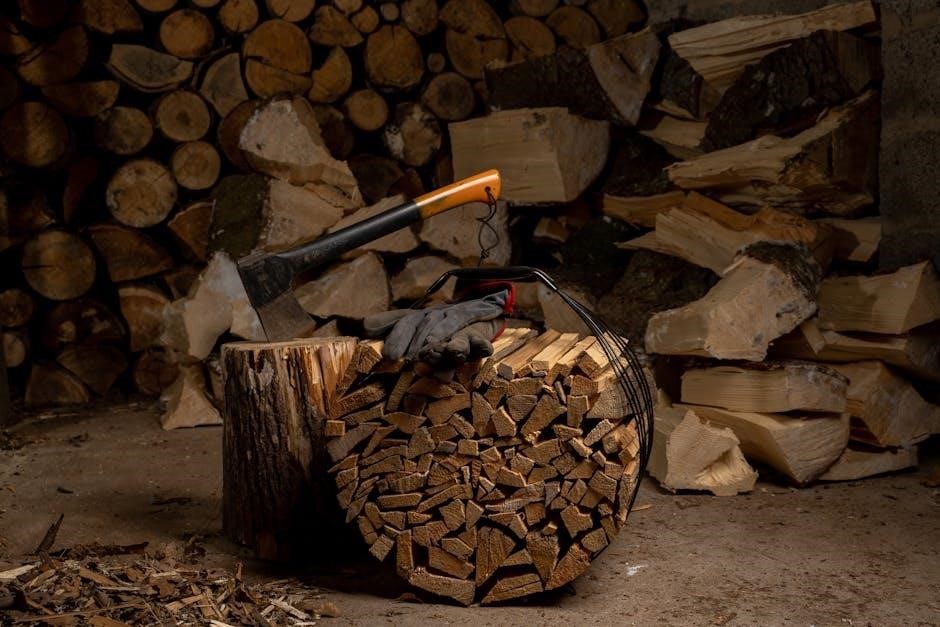
Troubleshooting Common Issues
Identify common issues like ignition problems or low flames, and follow the manual’s troubleshooting guide for solutions. Addressing these promptly ensures safe and efficient operation.
6.1 Ignition Problems: Causes and Solutions
Ignition issues in Superior Fireplaces can stem from faulty igniters, clogged burners, or gas supply disruptions. If the igniter doesn’t spark, check for dirt or moisture. Ensure the gas valve is fully open and connections are secure. Clean the burner ports with a soft brush to remove debris. If the issue persists, inspect the igniter electrode for wear and replace it if necessary. Refer to the manual for specific troubleshooting steps. If problems remain unresolved, contact a certified technician to avoid safety hazards. Regular maintenance and inspections can prevent such issues. Always follow the manufacturer’s guidelines for repairs and replacements to ensure optimal performance and safety.
6.2 Low Flame or Uneven Burning: How to Fix
Low flame or uneven burning in Superior Fireplaces can be caused by improper air shutter adjustment, insufficient gas pressure, or blockages in the venting system. To resolve this, ensure the air shutter is open to the recommended setting. Check the gas line for leaks or kinks and verify that the pressure matches the manufacturer’s specifications. Inspect the venting system for obstructions like soot or debris and clean it if necessary. If the issue persists, consult the manual for specific adjustments or contact a certified technician. Avoid operating the fireplace until the problem is resolved to prevent safety risks. Regular maintenance, such as cleaning the burner and vents, can help prevent uneven burning and ensure optimal performance.
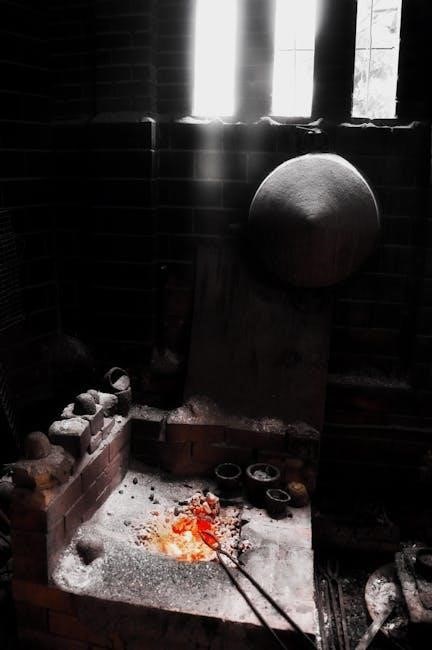
Accessories and Optional Features
Superior Fireplaces offer remote control operation for convenience and heat distribution fans to enhance warmth. Optional features include smart home integration and automatic updates for seamless functionality and personalized control.
7.1 Remote Control Operation
Superior Fireplaces offer remote control operation, providing unparalleled convenience and ease of use. This feature allows users to adjust flame height, heat output, and even schedule operations from the comfort of their couch. The remote control is designed with a user-friendly interface, ensuring seamless functionality. Additionally, many models are compatible with smart home systems, enabling voice control through devices like Alexa or Google Home. This integration enhances the overall experience, offering a modern and efficient way to manage your fireplace. The remote control also includes features like timers and temperature settings, allowing for customized warmth and ambiance. With the ability to operate your fireplace remotely, Superior Fireplaces combine traditional charm with cutting-edge technology, ensuring a hassle-free and enjoyable experience for homeowners. This feature is particularly useful for those seeking convenience without compromising on safety or performance.
7.2 Heat Distribution Fans: Installation and Use
Superior Fireplaces offer optional heat distribution fans to enhance warmth circulation throughout your home. These fans are designed to work seamlessly with your fireplace, improving efficiency and comfort. Installation should be performed by a qualified technician to ensure proper function and safety. Once installed, the fan can be activated via a switch or remote control, depending on the model. For optimal performance, turn on the fan after the fireplace has been burning for a few minutes to allow heat to build up. Regular maintenance, such as cleaning the fan blades, is recommended to ensure longevity and efficiency. These fans are energy-efficient and operate quietly, making them a practical addition to your fireplace system. Always follow the manufacturer’s guidelines for installation and use to maximize benefits and safety.

Environmental and Efficiency Considerations
Superior Fireplaces are designed with eco-friendly features to minimize emissions and maximize energy efficiency, ensuring a greener and cost-effective heating solution for your home.
8.1 Emissions and Environmental Impact
Superior Fireplaces are engineered to minimize environmental impact through advanced combustion technology, ensuring low emissions and compliance with environmental regulations. These fireplaces feature direct-vent systems, which enhance fuel efficiency and reduce harmful pollutants. By utilizing sealed combustion chambers, they prevent emissions from entering living spaces while maintaining high energy efficiency. This eco-friendly design aligns with modern sustainability goals, offering a greener alternative for home heating. The fireplaces are also designed to meet stringent emissions standards, making them a responsible choice for environmentally conscious homeowners. Their energy-efficient operation not only reduces energy consumption but also lowers overall environmental footprint, promoting a cleaner and healthier atmosphere both indoors and outdoors.
8.2 Energy Efficiency Ratings and Savings
Superior Fireplaces boast impressive energy efficiency ratings, providing significant savings on heating costs. With advanced designs, they deliver optimal heat output while minimizing energy consumption. These fireplaces often feature high AFUE (Annual Fuel Utilization Efficiency) ratings, ensuring that a high percentage of fuel is converted into usable heat. By efficiently distributing warmth, they reduce the need for additional heating sources, lowering overall energy bills. Additionally, their direct-vent technology prevents heat loss through the chimney, further enhancing efficiency. Homeowners can enjoy cozy warmth without compromising on energy savings, making Superior Fireplaces a cost-effective and eco-conscious choice for home heating needs.
Superior Fireplaces offer a blend of safety, efficiency, and warmth. By following this manual, you ensure safe operation and maximize energy savings while enjoying a cozy home environment.
9.1 Final Tips for Safe and Efficient Use
For optimal performance and safety, always conduct a pre-use inspection of your Superior Fireplace. Ensure all vents are clear and that no damage is visible. Regularly clean the fireplace and its surroundings to prevent dust buildup. Use only recommended fuels and follow the manufacturer’s guidelines for operation. Keep flammable materials at least 3 feet away from the fireplace. For gas models, ensure the ignition system is functioning properly before use. Consider installing a carbon monoxide detector for added safety. To maintain efficiency, adjust the flame height as needed and utilize optional features like heat distribution fans. Store the remote control in a safe place to prevent accidental activation. Finally, schedule annual inspections by a qualified technician to ensure your fireplace operates safely and efficiently. Always refer to your manual for detailed instructions.
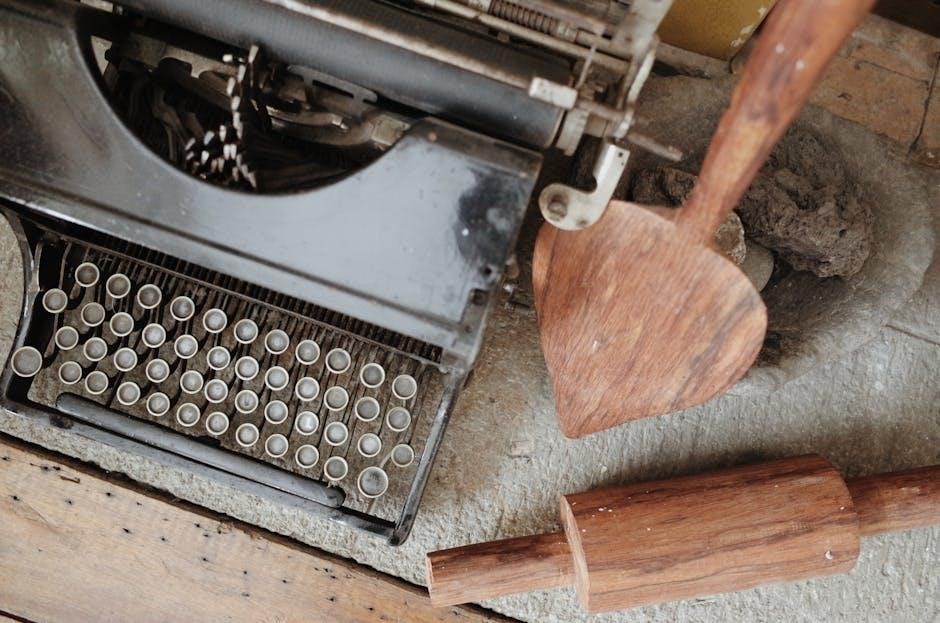

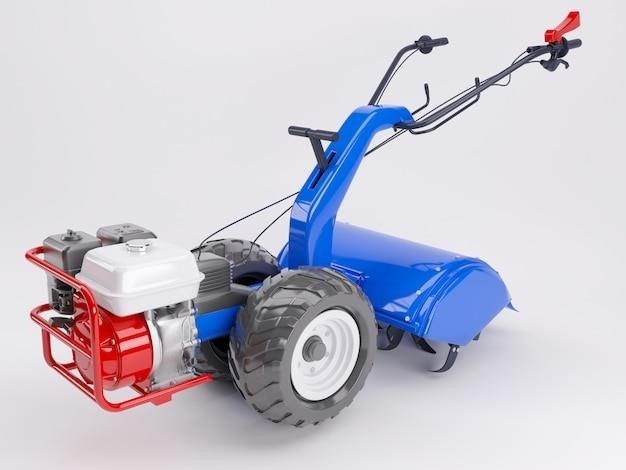
Leave a Reply
You must be logged in to post a comment.